
Military Historical Museum (Mountain Barracks) Caracas-Venezuela
Military Historical Museum of Venezuela
Hello dear Hivers,
Continuing with my virtual tour of the various architectural sites that I have visited in the city of Caracas Venezuela and that have caught my attention for some reason. Today I want to take you to know what is now known as Cuartel de la Montaña, the old Military Historical Museum.
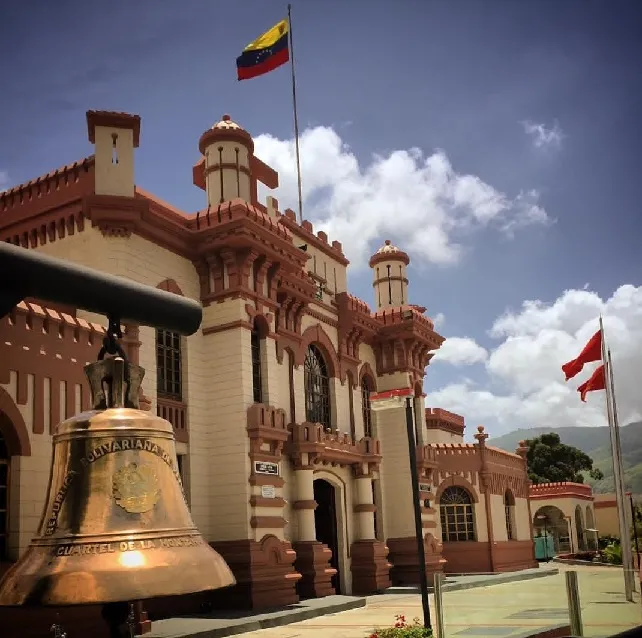
I confess that this place caught my attention, not so much for its construction, but mostly for its history and the weight it has in the political changes that our country has gone through, in it lie the remains of former President Hugo Chavez Frias. This place has served as a settlement for several institutions.
It was built in 1904 by Engineer Alejandro Chataing and Architect Jesus Rosas, under the mandate of President Cipriano Castro and was inaugurated in 1907, at that time it was the Cipriano Castro Barracks.
This place is located on the plateau of the plain sector at more than 900 meters above sea level, near the Monte Piedad neighborhood, in the 23 de enero parish of the capital of Caracas, Venezuela.
It is a classic military building with an eclectic style, as it is at a great height and its structure is imposing, it can be seen from several places in the city.

The first time I visited it was precisely during a commemorative date in the country, I do not remember specifically which one, and since I was working in a public institution at the time, we were invited to witness part of the event.
When you get to Barrio Monte Piedad, the Parroquia 23 de enero is very striking, it is a very poor area, you can see how all the houses are stacked one below the other, they are painted with many colors, which is very characteristic of the place.
Many years ago this place did not have much relevance, but now it is open to the public, once you arrive at the place you register in the guest book, upon entering you find a fairly large asphalted place with many plants around it, once you advance you cross the Boulevard of the Flags, these flags correspond to all the countries that are part of CELAG, it is a very nice area and is striking for its flags and how they wave to the rhythm of the breeze.
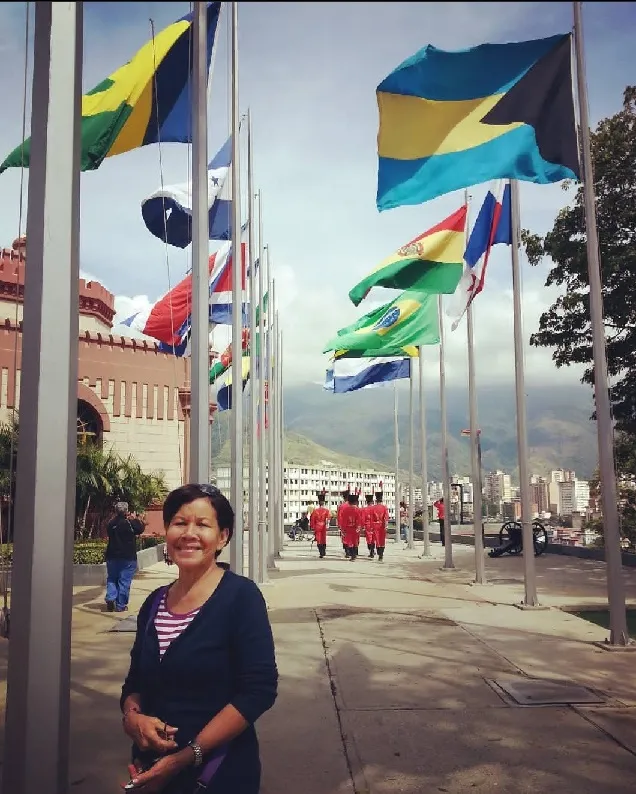
Next on the right hand side, there is a canyon and without much explanation you want to get closer and take pictures, because from there you can see the southwest of the city and you can distinguish some representative places of the city such as the Arco de la Federación, El Calvario Park, the Torres del Silencio, among many others. This place is known as the Plaza del Eterno Retorno and this cannon has been used to fire a cannonball in honor of the memory of the former president and also to welcome the new year.
Closer to the building, you can see an imposing and majestic structure of beige color and reddish edges, its windows have arched shape making reference to the gothic architecture, in the heights you can see two circular domes and the number 4 and the letter F in red representing the civic-military rebellion of February 4, 1992 and has two levels with rectangular shape.
Once inside you find a colonial style ceramic floor, its interior walls are beige, in the central square there is a very important monument, and in its surroundings are located the various exhibition halls that refer to the life of former President Hugo Chavez Frias and its tall columns are Tuscan style according to the explanation of the guide of the place.
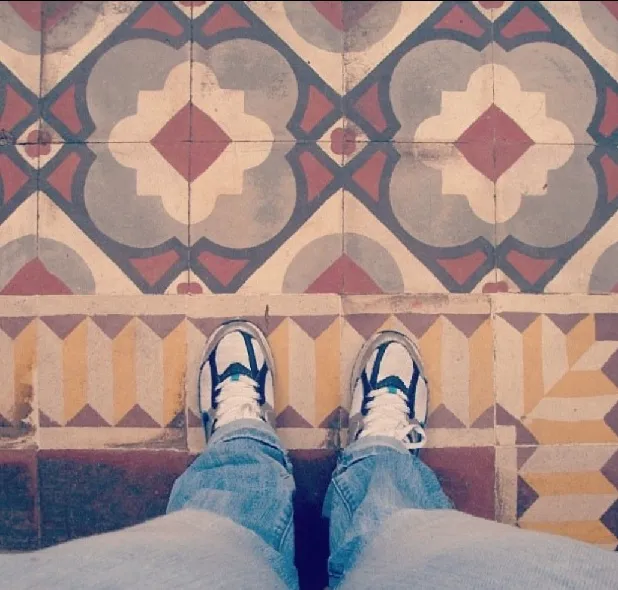
First they take you on a tour of the different rooms that exhibit photographs of the history of our country and finally you make a tour of the central square to admire the Monument of the Flower of the 4 elements, it is shaped like a flower and is made of green marble and red granite, In the center of this place is the sarcophagus of former President Hugo Chavez made with a polished gray granite, is surrounded by water, with very little depth and on each side has two ramps one to start the tour around the coffin and the other to leave.
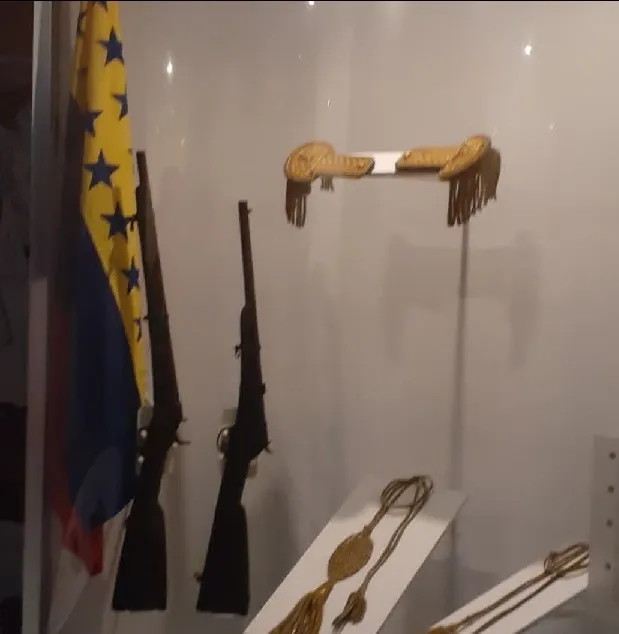
It is a place with a lot of character, but what particularly caught my attention was its history as I had already mentioned, this place began as a barracks, then it was the base of the Military Academy of Venezuela, then became the National Historical Museum and finally the Mountain Barracks and Mausoleum.
The fact that it has become the place where the remains of the former president rest, is due to the fact that because it is strategically well located, the Miraflores Palace, seat of the National Executive Power, can be observed from there and it was precisely its tactical location that influenced Hugo Chavez, who at that time was a Lieutenant Colonel of the Venezuelan Armed Forces, to choose it as the operational site for the attempted coup d'état against President Carlos Andres Perez in 1992.
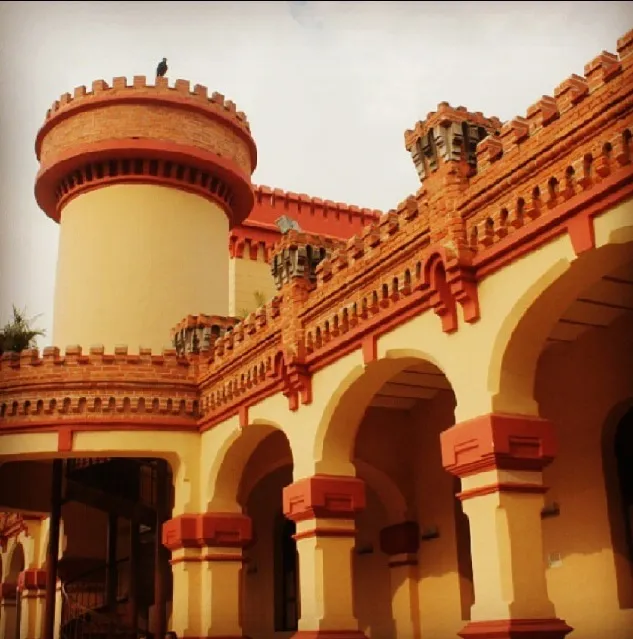
I particularly believe that this place has a lot of history, represents a before and after in the political history of our country and is one of the main attractions why it is so visited by Venezuelans and foreigners.
Once again, thank you for accompanying me to the end of this tour...
Sources consulted:
1.-Museo Histórico Militar: http://guiaccs.com/obras/museo-historico-militar/
2.- Cuartel de la Montaña Military Historical Museum: http://wikimapia.org/117644/es/Museo-Hist%C3%B3rico-MIlitar-Cuartel-de-la-Monta%C3%B1a
3.- Cuartel de la Montaña 4F: https://es.wikipedia.org/wiki/Cuartel_de_la_Monta%C3%B1a_4F
4.- Cuartel de la Montaña: Key place for the 4F Civil-Military Rebellion: https://www.telesurtv.net/news/Cuartel-de-la-Montana-Lugar-clave-para-la-Rebelion-Civico-Militar-del-4F-20140204-0014.html
5.- Community of Latin American and Caribbean States - CELAC: https://www.cancilleria.gov.co/international/consensus/clacs
6.- Cipriano Castro Barracks: https://iamvenezuela.com/2016/07/cuartel-cipriano-castro/
The website DeepL.com was used for the translation.
Some photographs are my property and others are taken from the cited sources.
Museo Histórico Militar de Venezuela
Hola queridos Hivers,
Continuando con mi recorrido virtual por los distintos lugares arquitectónicos que he visitado en la ciudad de Caracas Venezuela y que han llamado mi atención por algún motivo. Hoy quiero llevarlos a conocer el que ahora se conoce como Cuartel de la Montaña, el antiguo Museo Histórico Militar.
Les confieso que este lugar llamó mucho mi atención, no tanto por su edificación, sino más que todo por su historia y el peso que tiene en los cambios políticos que ha atravesado nuestro país, en él yacen los restos del Ex Presidente Hugo Chávez Frías.
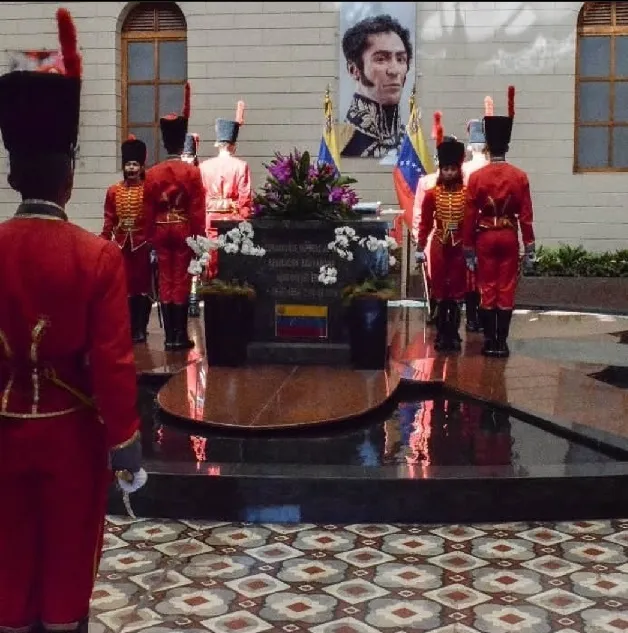
Este lugar ha servido de asentamiento para varias instituciones. Fue construida en el año 1904 por el Ingeniero Alejandro Chataing y el Arquitecto Jesús Rosas, bajo el mandato del presidente Cipriano Castro y se inauguró en el año 1907, para ese entonces era el Cuartel Cipriano Castro.
Este lugar se ubica en la meseta del sector la planicie a más de 900 metros sobre el nivel del Mar, está cerca del Barrio Monte Piedad, en la Parroquia 23 de enero de la capital de Caracas, Venezuela.
Es una edificación militar clásica con un estilo ecléctico, como está a gran altura y su estructura es imponente, se puede ver desde varios lugares de la ciudad.
La primera vez que lo visité fue precisamente durante una fecha conmemorativa en el país, no recuerdo específicamente cual y como para ese entonces trabajaba en una institución pública fuimos invitados para presenciar parte del evento.
Cuando llegas al Barrio Monte Piedad, llama mucho la atención la Parroquia 23 de enero que se encuentra cerca, es una zona bastante pobre, puedes observar como todas sus casas apiladas una debajo de la otra, se encuentran pintadas con muchos colores, lo cual es muy característico del lugar.
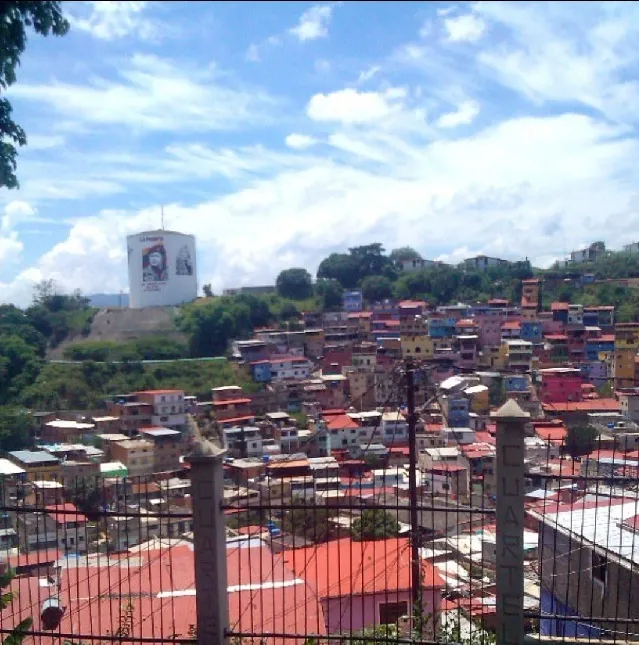
Hace muchos años este lugar no tuvo mucha relevancia, pero ahora se encuentra abierto al público, una vez llegas al lugar te registras en el libro de visitas, al entrar te encuentras con un lugar bastante amplio asfaltado y con muchas plantas a su alrededor, una vez que avanzas atraviesas el Bulevar de las Banderas, estas banderas corresponden a todos los países que forman parte de la CELAG, es una zona muy bonita y llama la atención por sus banderas y como estas ondean al ritmo de la brisa.
Seguidamente a mano derecha, se encuentra un cañón de salva y sin mucha explicación quieres acercarte y tomarte fotos, ya que desde allí se puede contemplar el suroeste de la ciudad y se pueden distinguir algunos lugares representativos de la ciudad como el Arco de la Federación, el Parque El Calvario, las Torres del Silencio, entre muchos otros. Este lugar se conoce como la Plaza del Eterno Retorno y este cañón se ha utilizado para disparar una bala de salva en honor a la memoria del expresidente y también para darle la bienvenida al año nuevo.
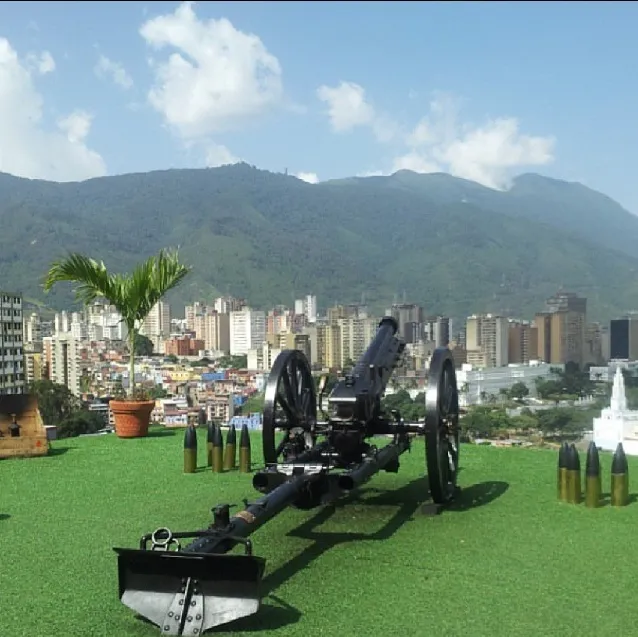
Ya más cerca del edificio, se puede ver una estructura imponente y majestuosa de color beige y bordes rojizos, sus ventanas tienen forma arqueada haciendo referencia a la arquitectura gótica, en las alturas se puede observar dos cúpulas circulares y el número 4 y la letra F en color rojo que representa la rebelión cívico militar del 4 de febrero de 1992 y cuenta con dos niveles con forma rectangular.
Una vez dentro te encuentras con un piso de cerámica de tipo colonial, sus paredes interiores son de color beige, en la plaza central se encuentra un monumento muy importante, y a sus alrededores se ubican las distintas salas de exposiciones que hacen referencia a la vida del Ex Presidente Hugo Chávez Frías y sus altas columnas son de estilo toscano según la explicación del guía del lugar.
Primero te llevan a un recorrido por las distintas salas que exhiben fotografías de la historia de nuestro país y finalmente haces un recorrido por la plaza central para admirar el Monumento de la Flor de los 4 elementos, la misma tiene forma de flor y está elaborada en mármol color verde y granito color rojo, en el centro de este lugar se encuentra el sarcófago del ex presidente Hugo Chávez elaborado con un granito pulido de color gris, está rodeado por agua, con muy poca profundidad y a cada lado cuenta con dos rampas una para iniciar el recorrido alrededor del féretro y la otra para salir.

Es un lugar con mucho carácter, pero lo que particularmente llamó mi atención fue su historia como ya les había comentado, este lugar comenzó siendo un cuartel, después fue base de la Academia Militar de Venezuela, luego pasó a ser el Museo Histórico Nacional para finalmente ser el Cuartel de la Montaña y Mausoleo.
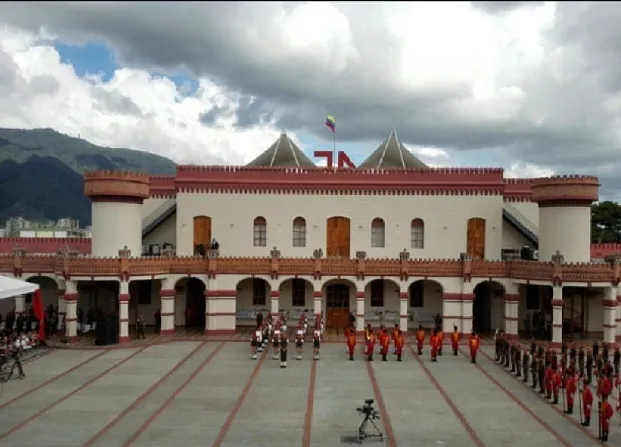
El hecho de que se haya convertido en el lugar donde reposan los restos del ex presidente, se debe a que por ser un lugar estratégicamente bien ubicado, se pueden observar desde allí el Palacio de Miraflores, sede del Poder Ejecutivo Nacional y fue precisamente su ubicación táctica la que influyó para que en el año 1992, Hugo Chávez que para ese entonces era Teniente Coronel de las Fuerzas Armadas venezolanas, lo escogiera como lugar operativo para la intentona de Golpe de estado contra el presidente Carlos Andrés Pérez.
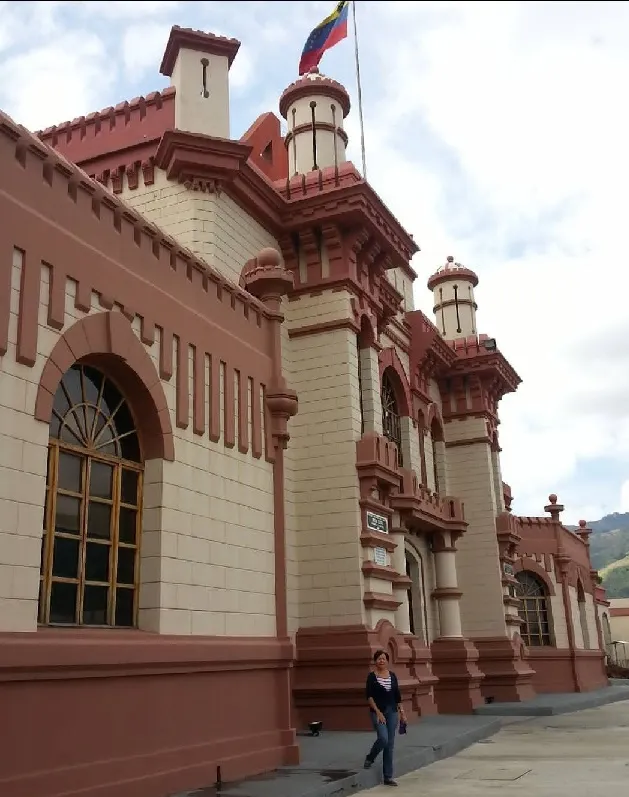
Particularmente creo, que este lugar tiene mucha historia, representa un antes y un después en la historia política de nuestro país y es uno de los principales atractivos por los cuales es tan visitado por venezolanos y extranjeros.
Una vez más, gracias por acompañarme hasta el final de este recorrido…
Fuentes consultadas:
1.-Museo Histórico Militar: http://guiaccs.com/obras/museo-historico-militar/
2.- Museo histórico militar Cuartel de la Montaña: http://wikimapia.org/117644/es/Museo-Hist%C3%B3rico-MIlitar-Cuartel-de-la-Monta%C3%B1a
3.- Cuartel de la Montaña 4F: https://es.wikipedia.org/wiki/Cuartel_de_la_Monta%C3%B1a_4F
4.- Cuartel de la Montaña: Lugar clave para la Rebelión Cívico-Militar del 4F: https://www.telesurtv.net/news/Cuartel-de-la-Montana-Lugar-clave-para-la-Rebelion-Civico-Militar-del-4F-20140204-0014.html
5.- Comunidad de Estados Latinoamericanos y Caribeños - CELAC: https://www.cancilleria.gov.co/international/consensus/clacs
6.- Cuartel Cipriano Castro: https://iamvenezuela.com/2016/07/cuartel-cipriano-castro/
Para la traducción se utilizó la pagina DeepL.com
Algunas fotografías son de mi propiedad y otras tomadas de las fuentes citadas.